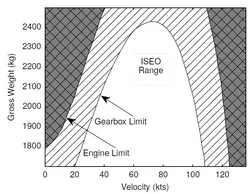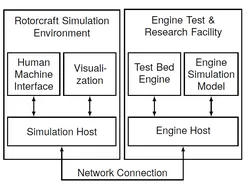Intended Single Engine Operation (ISEO)

Helicopters that are equipped with two or more turboshaft engines for safety reasons, mostly operate in part load conditions. As the specific fuel consumption is reduced with increasing engine load, shutting down one engine in suitable flight envelope areas would cut down fuel consumption significantly and reduce engine operating hours. To account for safety in case of failure of the active engine, the inactive engine is required to restart fast enough to minimize the altitude lost until a stationary flight condition is recovered. Thus a quick start system concept for turboshaft engines has been developed and tested on a test bed in preceding studies.

In order to evaluate intended single engine operation during mission flight an Allison 250-C20B engine equipped with a quick start system has been coupled to a helicopter flight simulator. The research simulator replicates BO 105 flight physics, which are validated against flight test data. Pilot-in-the-loop tests were performed to evaluate the effects on the helicopter dynamics during engine failure until the inactive engine is quick-started.
Video of the hardware in the loop simulation
Publikationen
- Spieß, C., Kerler, M., Hajek, M.: Effects on Helicopter Dynamics in Case of Engine Failure During Intended Single Engine Operation; 40th European Rotorcraft Forum; 2014
- Hönle, J., Barth, A., Erhard, W., Kau, H.-P.: Engine Quick Start in Case of Emergency - a Requirement for Saving Fuel by Means of Engine Shutdown; 38th European Rotorcraft Forum; 2012
Kontakt
Dipl.-Ing. Christian Spieß